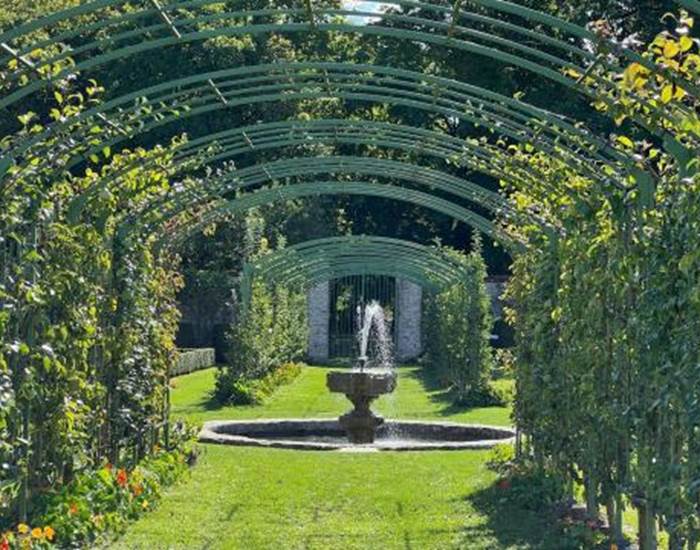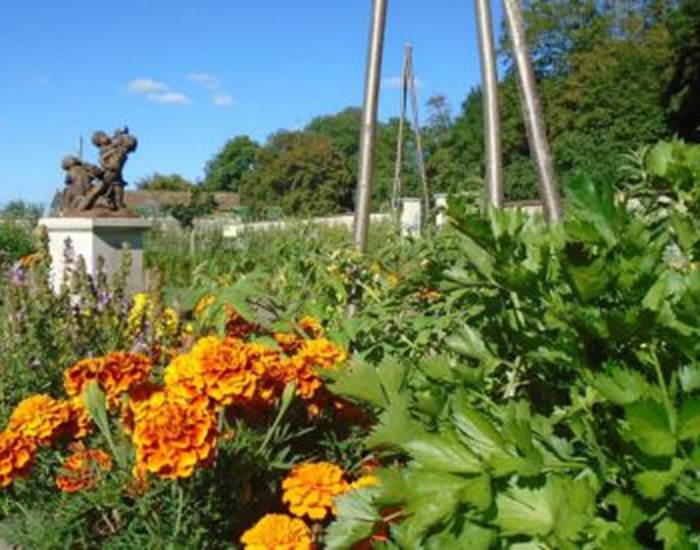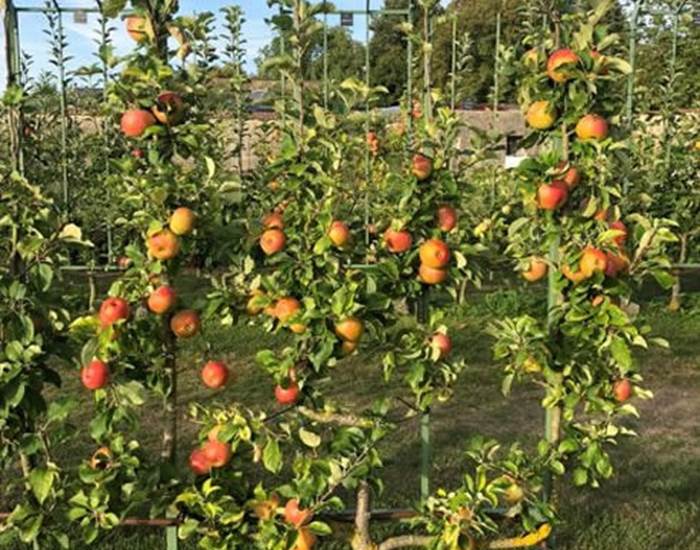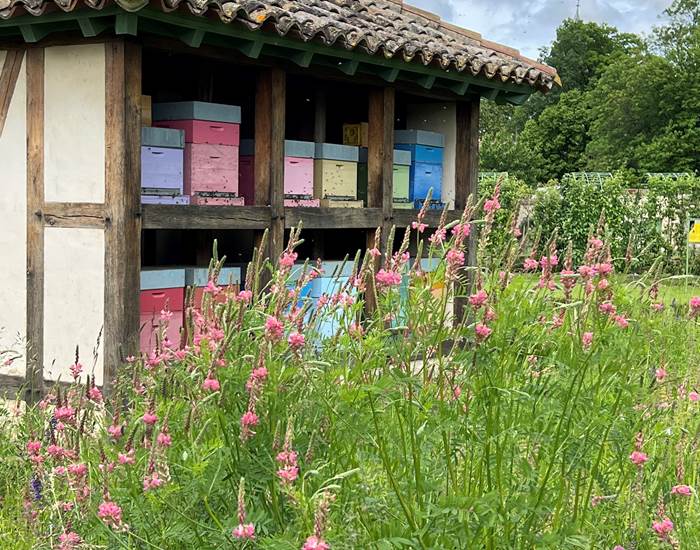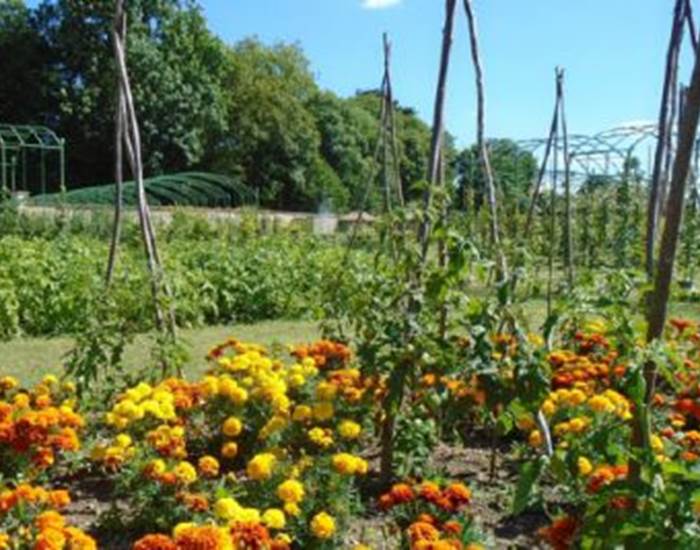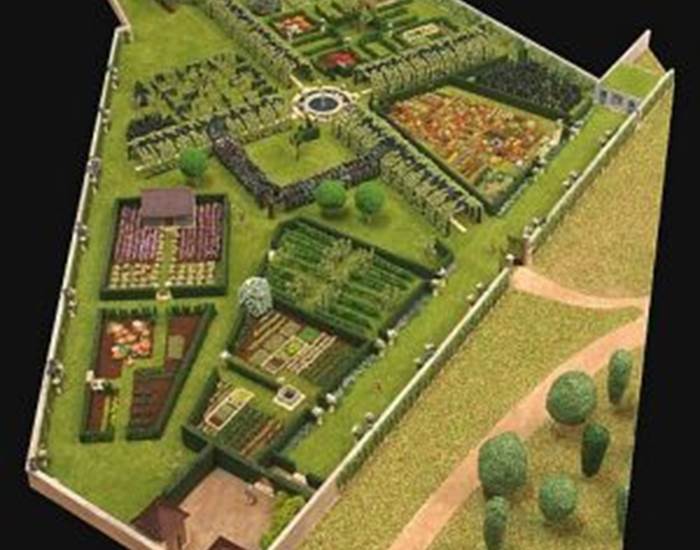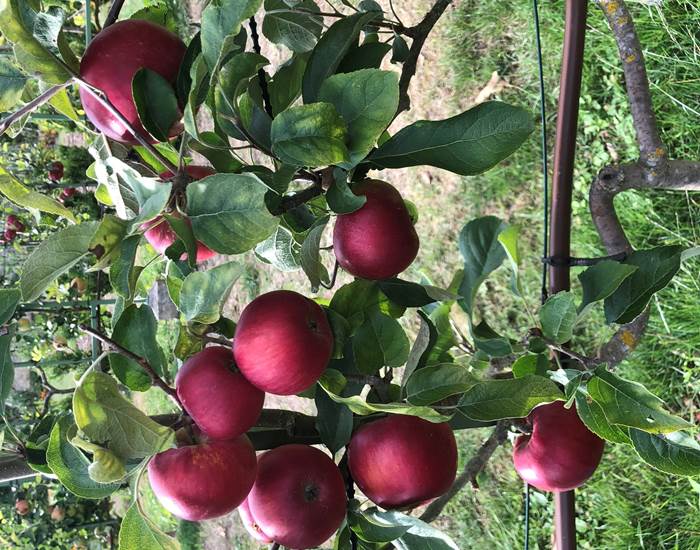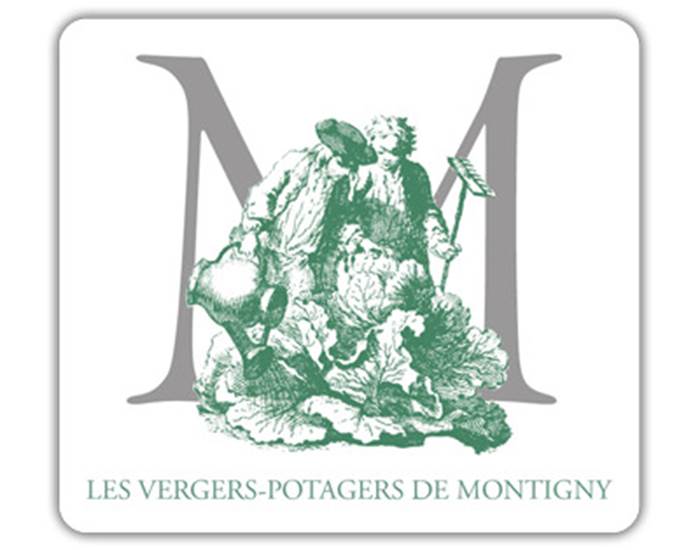Orchards and Vegetable Gardens based on the 19th Century Model
The rehabilitation of the Vergers-Potagers de Montigny, from 2010, was the subject of an in-depth preliminary study involving Éric Pallot, chief architect of Historic Monuments, Marc Lechien, landscape architect in charge of parks and gardens in Champagne-Ardenne, and Marie-France Menage-Small, owner of the château.
The aim is to revive a showcase of the know-how of 19th century gardeners, through the culmination of fashionable techniques such as espaliers and grafts.
An opening to the public, in particular to school groups, but also the creation of a place of learning and transmission of knowledge through internships for young students in partnership with specialized schools and high schools and workshops for the general public. Our arboricultural, market gardening and beekeeping productions benefit from the ESPRIT PARC label.
The showcase of know-how
The Orchards-Vegetable Gardens are adjacent to the English-style park, near the orangery. They represent a space of 5,244m2 enclosed by walls.
We can make out the layout of the 19th century: a cross of paths leading to a vast circular basin, "the gardener's basin", with, nearby, a heat chamber (probably housing a melon garden and delicate fruit trees) which leads to the orangery.
There are many varieties of apple and pear trees, some of which were mentioned in pomology treatises in the 16th century, while others were created in the 19th century.
It should be noted that Montigny is a very good illustration of the advances in the science of fruit growing in the 19th century.
The very layout of the enclosure reflects the search for an ideal: the 3.60 metre walls form an irregular polygon, optimising exposure to the sun in all seasons.
The know-how of the time is at its peak with sophisticated forms of trees in vases, pyramids, goblets...
Apple and pear trees are grown in the form of horizontal, vertical cordons or arches. The combination of productivity, rationality and aesthetics is then achieved.
Nine gardens
Nine gardens connected to the original irrigation network without hindering the movement of visitors:
Three vegetable gardens (the Châssis garden, the children's garden and the tomato and potato area)
Four open-air fruit gardens (Clos des Caissiers, Clos des Fruits Rouges, Clos des Cordons and Clos des Pêchers) complete the collection of fruit trees trained on the walls. Finally, the honey garden and its apiary with hemp mud and half-timbering. In total, several hundred varieties of fruit and vegetables, many of them old, which are included in the composition of the Fraicheurs boxes to be consumed on the terrace of the orangery or to take away.
Four arched paths lead to the gardener's pond where a beautiful Renaissance fountain surrounded by benches provides visitors with a place to stop and dream.
In the middle of this timeless space stands a superb apiary made of hemp mud and half-timbering where its ladies the bees are busy producing delicious honey.
All these fruits and vegetables can be ordered on our Drive Fermier to eat on site at A La Table Des Jardiniers or to take away






